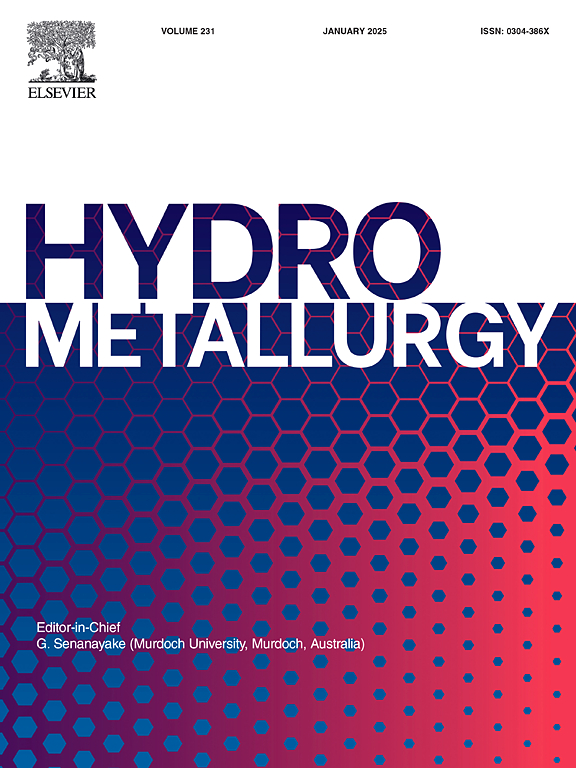Hydrometallurgical process of spent lithium-ion battery recycling Part. 2 Recovery of valuable metals from the cathode active material leachates: Review and cost analysis
IF 4.8
2区 材料科学
Q1 METALLURGY & METALLURGICAL ENGINEERING
引用次数: 0
Abstract
The rapid increase in lithium-ion batteries (LIBs) usage, particularly in portable electronics and electric vehicles, has led to considerable environmental challenges due to waste generation, creating a need for recovery of metals from waste. This review examines methods for recovering valuable metals—Co, Ni, Mn, and Li—from the leachates of end-of-life spent LIBs using hydrometallurgical unit processes, summarizing current research and technological advancements. Recovery techniques such as precipitation, solvent extraction, electrodeposition, ion exchange (and adsorption), and other approaches were evaluated in terms of efficiency, cost-effectiveness, and environmental impact. Moreover, a cost analysis comparing hydrometallurgical methods—precipitation, solvent extraction, electrochemical extraction—was conducted. This review highlights the technological gaps in current recovery methods and stresses the need for further research to improve metal recoveries and minimize the environmental impacts of hydrometallurgical processes. Integrating experimental findings, the review offers a comprehensive overview of recovery pathways and provides insights into the future of sustainable LIBs recycling and cost analysis.
废锂离子电池的湿法冶金回收。第二部分:从正极活性物质渗滤液中回收有价金属:综述与成本分析
锂离子电池(lib)的使用迅速增加,特别是在便携式电子产品和电动汽车中,由于产生的废物导致了相当大的环境挑战,需要从废物中回收金属。本文综述了利用湿法冶金装置工艺从报废废旧lib的渗滤液中回收有价金属(co, Ni, Mn和li)的方法,总结了目前的研究和技术进展。从效率、成本效益和环境影响等方面对沉淀法、溶剂萃取法、电沉积法、离子交换(和吸附法)等回收技术进行了评估。并对湿法冶金法(沉淀法、溶剂萃取法、电化学萃取法)进行了成本分析。本文综述了当前回收方法的技术差距,并强调需要进一步研究以提高金属回收率和减少湿法冶金过程对环境的影响。综合实验结果,该综述提供了对回收途径的全面概述,并为可持续lib回收和成本分析的未来提供了见解。
本文章由计算机程序翻译,如有差异,请以英文原文为准。
求助全文
约1分钟内获得全文
求助全文
来源期刊

Hydrometallurgy
工程技术-冶金工程
CiteScore
9.50
自引率
6.40%
发文量
144
审稿时长
3.4 months
期刊介绍:
Hydrometallurgy aims to compile studies on novel processes, process design, chemistry, modelling, control, economics and interfaces between unit operations, and to provide a forum for discussions on case histories and operational difficulties.
Topics covered include: leaching of metal values by chemical reagents or bacterial action at ambient or elevated pressures and temperatures; separation of solids from leach liquors; removal of impurities and recovery of metal values by precipitation, ion exchange, solvent extraction, gaseous reduction, cementation, electro-winning and electro-refining; pre-treatment of ores by roasting or chemical treatments such as halogenation or reduction; recycling of reagents and treatment of effluents.
 求助内容:
求助内容: 应助结果提醒方式:
应助结果提醒方式:


